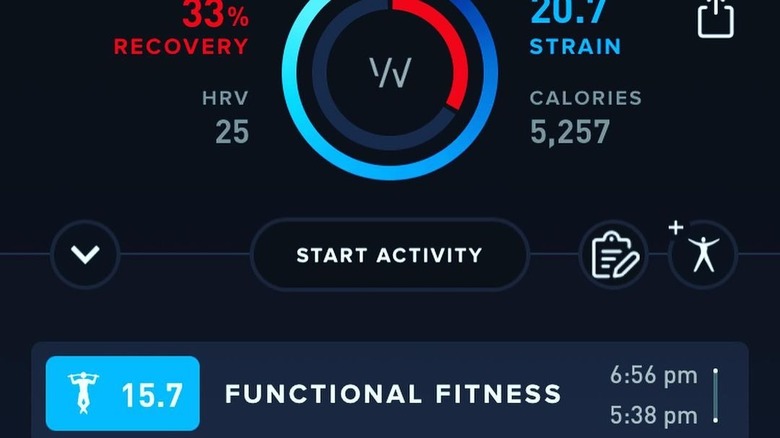What Is A Whoop And How Can It Help You Stay Fit?
Wearable fitness trackers are more popular than ever before, and not just inside the gym. This market is estimated to reach $192 billion by 2030, driven by technological advancements and the growing consumer interest in health and well-being. And as it turns out, people who wear these devices are more likely to stay active and reach their fitness goals, a recent review published in The Lancet Digital Health suggests.
The Whoop 4.0, a newcomer to the market, stands out with its innovative design. At first glance, it looks like a fabric band, but it's much more than that. After you put it on your wrist, you can track your heart rate, skin temperature, sleep quality, and other health metrics directly from your smartphone. What's more, Whoop can measure blood oxygen levels and post-exercise recovery rate, making it easier to plan your workouts.
Launched in 2012, Whoop has become a leading brand of wearable fitness gadgets over the past few years. As of today, it's worth $1.2 billion and has partnerships with the National Football League (NFL), the Professional Golfers' Association (PGA), and other sports organizations, reports CNBC. The Whoop Strap 4.0, its latest product, is designed to blend seamlessly into your outfit and provide the insights you need to build healthier habits.
The concept behind Whoop, a screenless fitness tracker for the modern athlete
Featuring a minimalist design, the Whoop 4.0 is a smart fitness tracker designed to maximize your performance and help you lead a healthier lifestyle. Powered by Bluetooth technology, it can connect to your smartphone and display your data in real time, making it easier to monitor your workouts, respiration rate, blood oxygen (SpO2) levels, and more. You can also see how much sleep you get and how fast you recover from training.
Whoop's latest fitness tracker is available in different colors and styles, and you can customize every single part of it. Compared to the previous version, it's about one-third smaller and comes with more advanced sensors. Plus, you can wear it around your upper arm, waist, or other body parts — not just on your wrist.
Users can check their heart rate and other data via the Whoop app, which requires a membership plan. But, unlike Whoop 3.0, the 4.0 version is free for members. A monthly subscription is around $30.00, and you can save up to 20% with an annual or biennial plan. The Whoop app provides custom insights, performance reports, and online support.
But despite these features, the new Whoop band lacks basic functions, such as a step counter and GPS tracking, notes Live Science. Another drawback is that it doesn't have a screen, which can be tricky for runners, swimmers, and other users who may not be able to access the app during training.
Is the Whoop 4.0 worth it?
Johns Hopkins Medicine recommends using a fitness tracker to monitor your activity level and get motivated to exercise more. "Tracking likely helps a lot of people when combined with a clear goal to shoot for," said cardiologist Seth Martin. The Whoop 4.0 can offer valuable insights and push you to challenge yourself, but it's far from perfect.
PCMag gave it a score of 2.5 out of 5, saying it's harsh on the skin and slightly inaccurate. The battery life isn't impressive either. Reviewers also claim that the fabric band absorbs sweat and takes too long to dry. Plus, the Whoop 4.0 will become pretty much useless if you ever cancel your membership plan.
On the positive side, Whoop's latest fitness tracker can accurately measure blood oxygen saturation and make personalized recommendations to boost your health. Additionally, the sleep tracking function is superior to that of other similar devices on the market, notes Tom's Guide. Other advantages include its waterproof design, the highly portable charger, and the ability to monitor post-workout recovery.
All in all, the Whoop 4.0 can be a good choice for athletes and weekend warriors alike. The biggest drawback is that it requires an ongoing monthly subscription. Leaving that aside, it provides a wealth of health data with an emphasis on sleep and athletic performance. Moreover, it can (and should) be worn around the clock, allowing users to track their lifestyle habits and make changes as needed.


